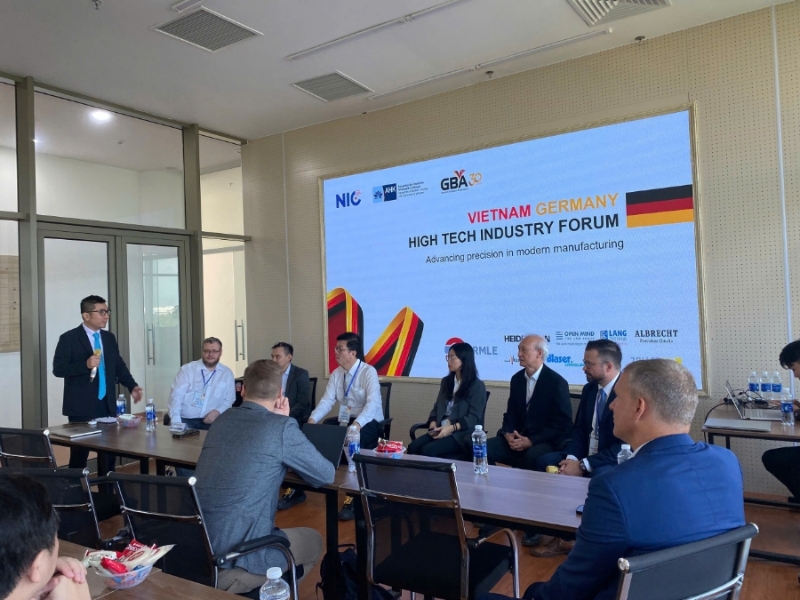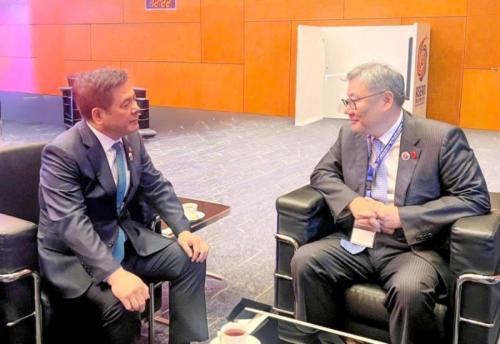Vietnam, Germany strengthen high-tech industry partnership
German businesses are ready to accompany Vietnam in building modern manufacturing capabilities, aiming for meeting international standards of efficiency and sustainability.
Aerospace, defense, security, electronics-semiconductor industries, and high-value supporting industries are supply chains with significant cooperation prospects between Vietnam and Germany.
The remark was shared at the Vietnam-Germany High-Tech Industry Forum 2025, co-organized by the National Innovation Center (NIC) under the Ministry of Finance, the German Industry and Commerce in Vietnam (AHK), and the German Business Association (GBA) on October 2, as part of Vietnam Innovation Day 2025.
One of the forum's main attractions was the technology demonstration area, featuring leading brands such as Hermle AG, Walter Tools, Open Mind, Heidenhain, Zoller, Albreght, Lang Technik, Blum Novotest, Blaser, Wenzel, Bosch Rexroth, and many other technology companies.
Additionally, within the framework of the event, numerous specialized workshops were held with the participation of experts, businesses, and research organizations from both countries. Key topics included: (1) Precision molds and composite processing, with discussions focused solutions for optimizing industrial supporting production; (2) Aerospace and defense-security, with experiences and technologies in the fields of materials, components, and defense systems shared; (3) Electronics and semiconductors, with discussions focused on opportunities for developing Vietnam's semiconductor industry in line with Prime Ministerial Decision No. 1131/QD-TTg on national strategic technology clusters.
Speaking at the forum, Mr. Bjorn Koslowski, a representative of AHK Vietnam, stated that today's event is a clear testament to the effective cooperation between the two nations. German businesses are ready to accompany Vietnam in building modern manufacturing capabilities, aiming for meeting international standards of efficiency and sustainability.
"We highly appreciate the efforts of the members of the Vietnam Semiconductor Network who have dedicated significant efforts to connect leading German technologies with the Vietnamese manufacturing and fabrication business community," said Mr. Koslowski.
Source: Khánh Vy





